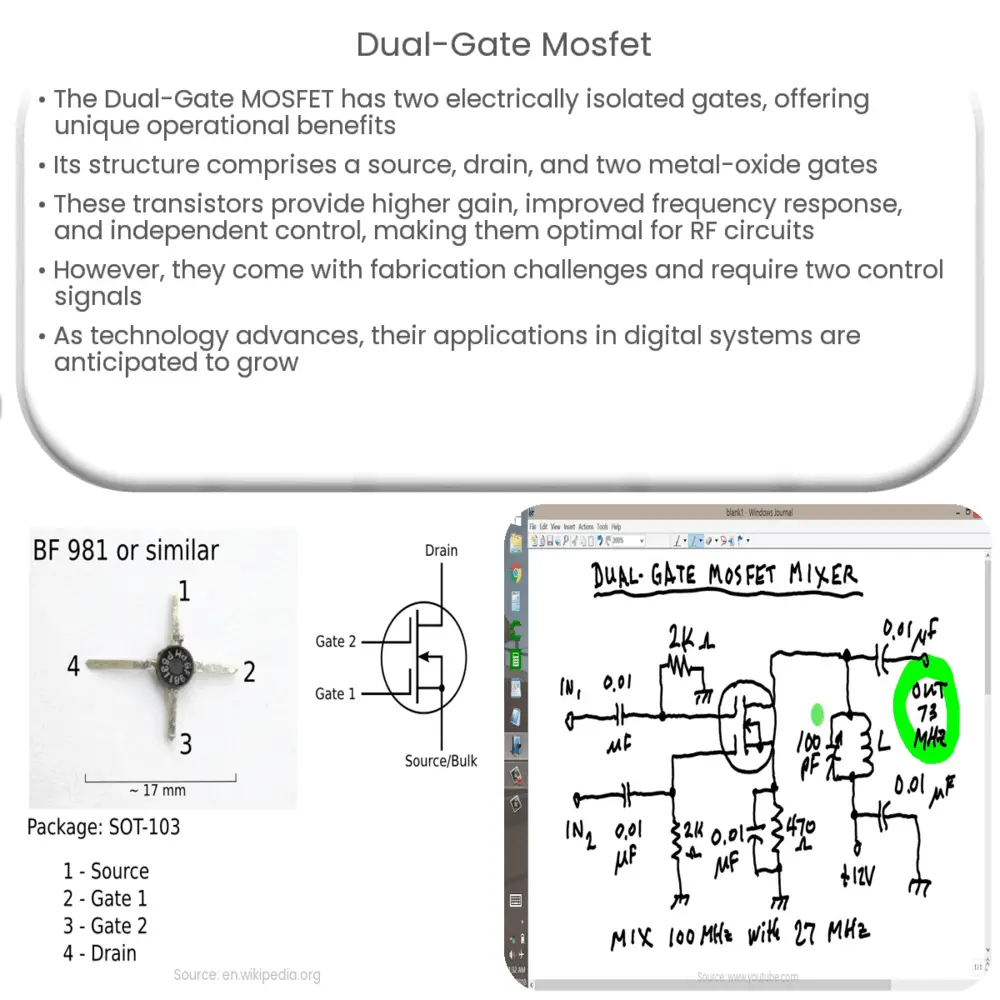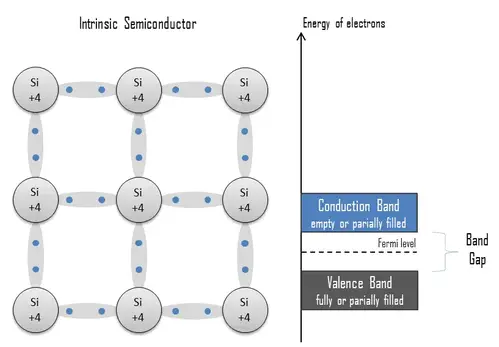Dive into the world of Dual-Gate MOSFETs: their structure, operation, applications, advantages, challenges, and future prospects.

Dual-Gate MOSFET: An Overview
The Dual-Gate Metal-Oxide-Semiconductor Field-Effect Transistor (Dual-Gate MOSFET) is a special kind of MOSFET with two gates instead of one. The two gates, which are electrically isolated from each other, provide the MOSFET with unique properties that make it particularly useful in certain applications.
Structure of a Dual-Gate MOSFET
Like its single-gate counterpart, the Dual-Gate MOSFET is a four-layer, three-terminal device consisting of a source, a drain, and two gates. The gates are constructed of a metal layer and two oxide layers, which isolate them from the channel region of the transistor.
- Source: The source is the terminal through which carriers enter the device.
- Drain: The drain is the terminal through which carriers leave the device.
- Gates: The gates control the flow of carriers through the device. In a Dual-Gate MOSFET, there are two gates instead of one. The gates can be controlled independently or together to modulate the device’s behavior.
Operation of a Dual-Gate MOSFET
The operation of a Dual-Gate MOSFET is similar to that of a standard MOSFET, with the addition of a second gate for additional control. When a voltage is applied to the gates, an electric field is created that attracts carriers to the channel region between the source and the drain. The number of carriers in the channel, and thus the current flow between the source and the drain, is controlled by the gate voltages.
When both gates are turned on, the Dual-Gate MOSFET behaves like a single-gate device. However, when only one gate is turned on, the device operates in a mode known as “substrate biasing”. In this mode, the off-state gate forms a depletion region that restricts the current flow through the device. This unique property allows the Dual-Gate MOSFET to achieve higher gain and better frequency response than a single-gate device.
Applications of Dual-Gate MOSFETs
Dual-Gate MOSFETs find wide application in RF (Radio Frequency) circuits, especially in situations where high gain and good frequency response are required. They are commonly used in:
- Mixer circuits, where two signals are combined to create new frequencies.
- RF amplifiers, where the signal strength is increased for transmission.
Moreover, the ability to control the device characteristics independently through the two gates makes Dual-Gate MOSFETs a promising candidate for use in advanced digital circuits and systems.
Advantages of Dual-Gate MOSFETs
Dual-Gate MOSFETs offer several distinct advantages over their single-gate counterparts:
- Improved Gain: Thanks to their unique structure, Dual-Gate MOSFETs can achieve significantly higher gain than single-gate devices. This makes them highly desirable for RF applications.
- Better Frequency Response: Dual-Gate MOSFETs have an improved frequency response, which is crucial in high-speed communication systems.
- Independent Control: With two gates, the device characteristics can be controlled independently, allowing for more flexibility in circuit design.
Challenges with Dual-Gate MOSFETs
Despite their advantages, there are a few challenges associated with the use of Dual-Gate MOSFETs:
- The complexity of the manufacturing process: Fabricating a Dual-Gate MOSFET is more complex than a single-gate device due to the need for two separate gate structures.
- The need for two control signals: Controlling a Dual-Gate MOSFET requires two separate control signals, which may complicate circuit design.
Future of Dual-Gate MOSFETs
As technology continues to advance, it is likely that Dual-Gate MOSFETs will find even wider application. Researchers are exploring their potential in a range of advanced digital circuits and systems, including programmable logic devices and power-efficient processors.
Conclusion
In conclusion, Dual-Gate MOSFETs, with their unique structure and operation, offer a host of advantages over single-gate devices, including higher gain, improved frequency response, and independent control. Despite the challenges associated with their fabrication and control, they are becoming increasingly important in RF applications and emerging digital technologies. As research continues to push the boundaries of what is possible with these devices, we can expect to see them playing an even greater role in the electronic devices of the future.



